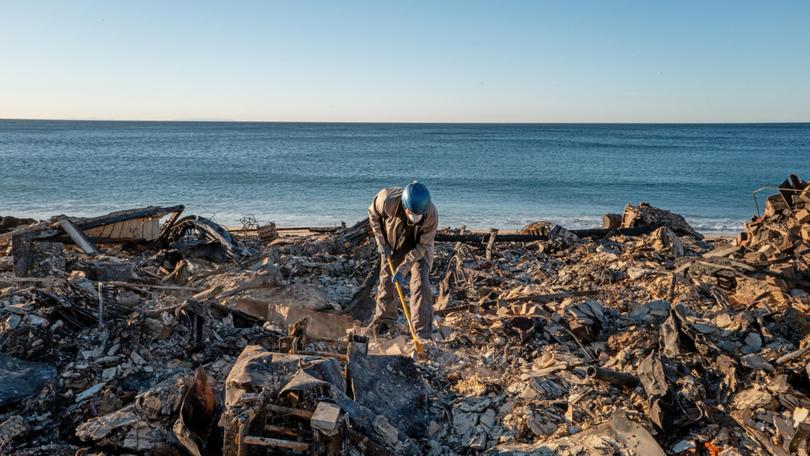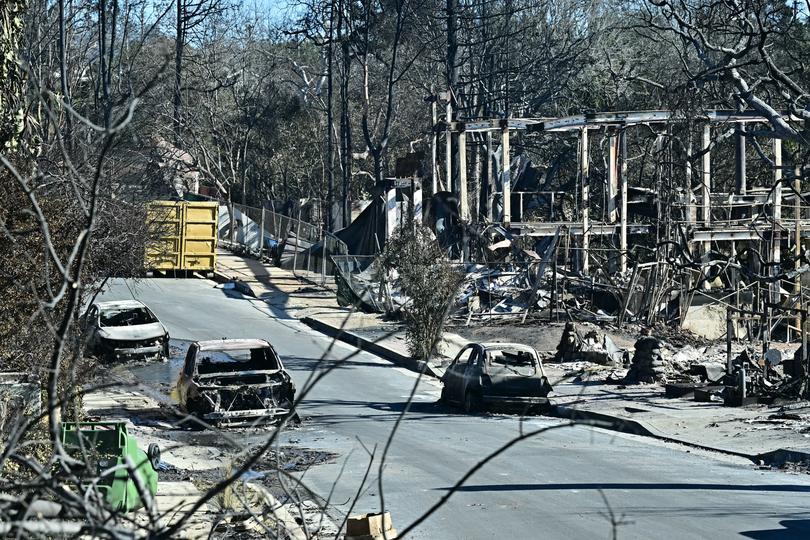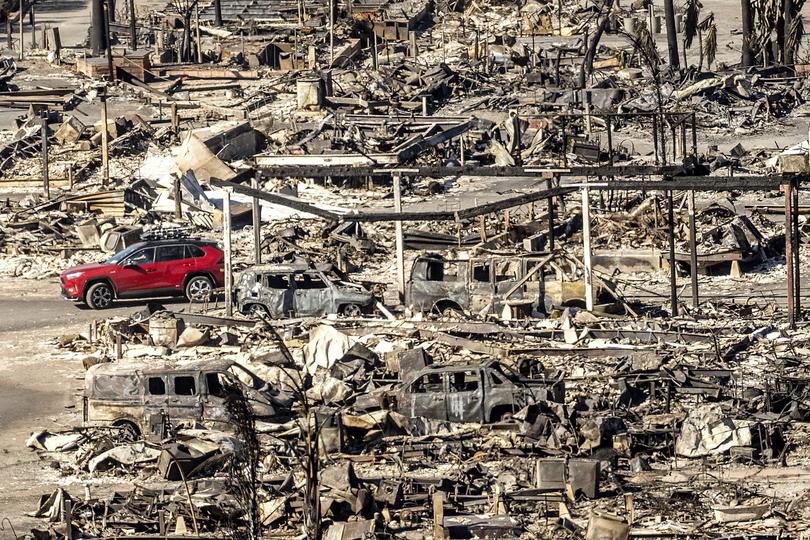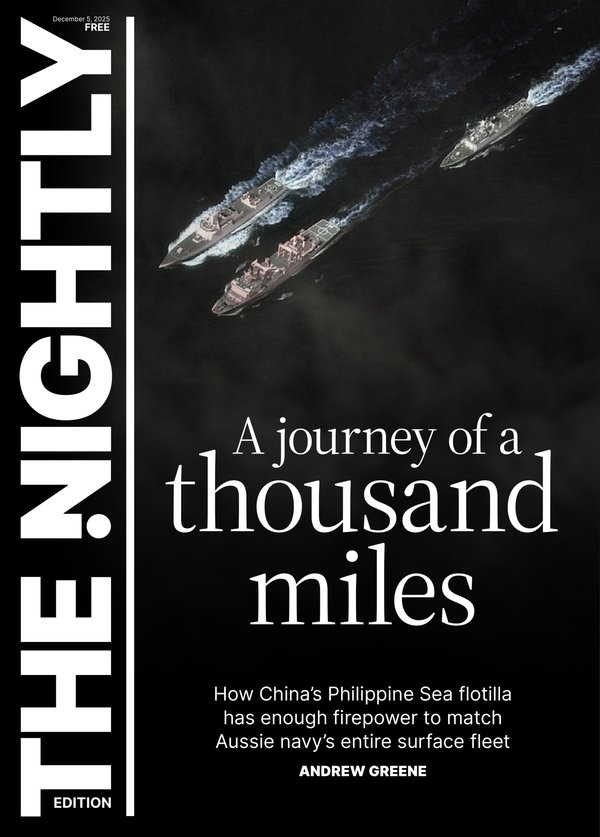What the LA fires mean for Australia and insurance premiums

The economic cost of the LA wildfires is yet to be fully tallied, but is expected to be the most costly fire-related natural disaster the United States has ever seen.
While fires still burn, the scale of loss is difficult to estimate, but the total cost ranges from $US50 billion, according to investment bank JP Morgan, to $275 billion according to AccuWeather, which has included not just physical damage but longer-term costs such as health impacts from smoke inhalation and relocation costs for those who have lost their homes.
JP Morgan expects $US20 billion in insured losses, setting up another year of pain for the reinsurance industry, which had to absorb US$140 billion in insured losses in 2024, according to Swiss reinsurance giant Munich Re.
Sign up to The Nightly's newsletters.
Get the first look at the digital newspaper, curated daily stories and breaking headlines delivered to your inbox.
By continuing you agree to our Terms and Privacy Policy.Last year was the third worst year on record since 1980 for insurers as hurricanes like Helene and Milton, the Valencia floods and Typhoon Yagi in China and Southeast Asia, caused US$320 billion in total damages.
Worryingly for the insurance industry, catastrophic events like hurricanes, earthquakes and typhoons are the tip of the iceberg.
“Losses from non-peak perils such as floods, wildfires, and severe thunderstorms were yet again substantial,” the Munich Re analysis said. Those losses, at $US136 billion, were well above the 10-year average.
“It is striking that, from a long-term perspective, non-peak perils are increasingly fuelling the trend of rising losses, while peak risks like tropical cyclones and earthquakes continue to be a source of loss volatility,” Munich Re said.
More worryingly, the gap between total losses and insured losses is growing, with British American reinsurer and risk analysis firm AON finding a “protection gap”, i.e., the amount of insured coverage to losses, at 60 per cent in 2024, one of the lowest on record.
Munich Re’s 2024 report was released during the hottest year on record, which surpassed the 1.5-degree threshold scientists at the 2015 Paris Climate Conference warned should not be crossed to avoid the most catastrophic impacts of climate change.
Peak premium
According to Alix Pearce, general manager of climate, social policy and international engagement at the Insurance Council of Australia, a 30 per cent hike in reinsurance costs last year resulted in steep premium hikes for consumers, and even before the LA fires, those reinsurance costs were continuing to flow through.
“Reinsurers have failed to earn their cost of capital in five of the last six years resulting in global reinsurance costs hitting a 20-year high in 2024,” Ms Pearce said.
“While it’s too early to predict whether there will be cost implications for local insurance markets, the LA fires have occurred in the context of a global reinsurance industry that has already been stressed by increasing extreme weather and inflation.”
Rade Musulin, principal at actuarial consulting firm Finity and chair of the climate and sustainability committee for the International Actuarial Association, said Australia’s risk can be more easily diversified in the global reinsurance system than “peak zones”.
With a relatively small population spread over a wide geographic area, the scale of losses parleys in comparison to densely populated areas like Miami or Tokyo.
But he warned that as temperatures rise, the increased frequency and cost of ‘other perils’, as some in the industry call them, will change the dynamics for how policies are written.
“This event is yet another extreme event in a period of time when we’ve had a lot of extreme events,” Mr Musulin said.
“What that means is that cumulatively, these events are likely to trigger things like catastrophe modellers re-evaluating their models, or reinsurers their risks.”
The pain will most likely be felt in regional areas or the fringes of the major cities, Mr Musulin added, where the risk of bushfires or floods, such as the 2022 southeast Queensland and NSW floods, are more prevalent.

The potential for increased premiums, or withholding of coverage, will be felt in the communities least able to afford it, at a time when 1.6 million people, or 15 per cent of the population are struggling to pay their insurance, according to Actuaries Institute.
Those struggling to pay their insurance jumped 30 per cent in a year.
It has major implications for human life, housing affordability, and government policy.
Speaking late last year at an Australian Securities and Investment Commission panel on insurance affordability, Julia Davis of the Financial Rights Legal Centre said that they are increasingly seeing people on lower incomes make the decision to cut their cover.
She worried that in order to protect their most valuable asset people were forced into increasingly risky decisions.
“One terrifying element is that research has shown the adequacy of a person’s level of insurance has an important effect on the risks they’re prepared to take when defending their home in a bushfire,” she said.
Losing coverage could also become a systemic risk to the financial system, the panel heard.
Sharanjit Paddam, lead author of Australian Actuaries Home Insurance Affordability Index said that by not paying home insurance, mortgage holders were in breach of their loan agreements.
“About 10 or 11 per cent (of households) potentially are not buying insurance. That can put the banking system at risk. We’ve estimated that nearly $60 billion - or three per cent of all lending - from banks is at risk in this way,” he said.
“During the GFC in the US, the worst it got (in terms of default) was 9.3 per cent. We’re at three per cent, and if we have another year of really bad disasters those banks are going to be at risk.
“If you look at regional areas like northern New South Wales (or) southern Queensland, that ratio goes up to 16 per cent of bank loans at risk.
“So you can imagine a small credit union, local building society, where 16 per cent of their bank assets are not insured, and the potential issues to our whole financial system.”
Housing affordability also hurt
As the population grows and more low-income people are pushed to city fringes, the impact of a lack of insurance can exacerbate wealth inequality.
Urban development and growing asset values in high-risk areas are key drivers of higher disaster losses after an extreme weather event, exacerbated by population growth, the Insurance Council’s Ms Pearce said.
She estimates that 1 in 12 properties have some level of flood risk, and 5.6 million homes are at risk from bushfire.
Over the last five years, the average annual incurred cost from bushfire was more than $560m, more than double the 30-year average. While Australia remains a well-insured nation, she said, $US12 billion in losses was completely unrecovered over the last decade.
“Australia’s population continues to grow in places with greater exposure to storms, floods, bushfires and cyclones. If we don’t implement policies to mitigate this risk, we will continue to see a widening of the insurance protection gap,” Ms Pearce said.
The insurance industry has responded to the issue by working with governments to improve regulations, particularly around building codes. That meant investing in resilience-enhancing infrastructure, strengthening building stock, and reforming land use planning.

It is driving up the cost of building, which is already an issue for affordability, according to the Grattan Institute’s energy and climate change deputy program director, Alison Reeve, and the impact on wealth inequality could be compounded by home owners seeing their most valuable asset getting wiped out.
“A lot of this gets really tied up with the fact that the housing market is quite broken. Your house is the largest asset you’ll ever own, and so if that’s permanently devalued, that is a permanent impact on your wealth,” Ms Reeve said.
Government gap filler
The alternative is government intervention. But all experts warned that it comes with significant consequences.
In California, many major insurers stopped selling new home insurance policies, saying rate increases approved by regulators were insufficient to cover losses from devastating wildfires.
According to Mr Musulin, a past regulatory policy intended to protect consumers from differential rates by location, and increases due to higher climate risk, prevented insurers from adopting the kind of advanced risk modelling used in Australia.
Many Californians were forced to use the State’s insurer of last resort, which will likely need to be bailed out.
It is increasingly a global problem, with the UK government stepping in after the Thames flood, and the New Zealand Natural Hazards Insurance Act.
Australia’s northern Australia insurance pool, introduced by the Morrison government, requires an annually reinstated $10 billion government guarantee.
But Ms Reeve warns that state-backed insurance can actually have perverse consequences, allowing people to move into high-risk areas, when market forces would have made living there untenable.
Instead, she said it made more sense for a policy focus on mitigation.
“The choice that we’re facing is how often do we want to go through something like the LA fires and the black summer fires?” she said.
“We are facing a certain amount of impact from climate change, so everything that we do to reduce emissions and stabilize the climate will mean fewer events like the LA fires in the future.
“It won’t make them go away altogether, but it will mean that it’s less bad than it otherwise would be.”

